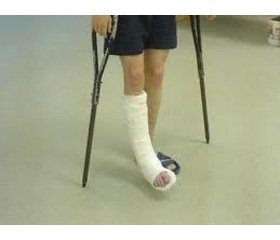Журнал «Травма» Том 16, №2, 2015
Вернуться к номеру
The significance of the pathogenetic and volume approach in the treatment of disorders reosteosintesis consolidation shaft fractures of shin bones
Рубрики: Травматология и ортопедия
Разделы: Клинические исследования
Версия для печати
Introduction. Treatment of diaphyseal fractures of the shin bone is one of the most urgent problems of modern traumatology, because of the prevalence of lower limb injuries and frequent poor treatment outcome. By materials studies in Donetsk NIITO in 2005-2007, disturbance of osteoreparation observed in 58.7% of patients with injuries of the lower extremities, among them 48.7% - slow consolidation of 9.9% - the formation of false joints, 3.3% have affected the consolidation of the fracture did not occur in the period exceeding 1.3-1.8 years. At the same time, the number of unsatisfactory results of treatment actually false joints and defects of limb segments, according to different authors, from 14.5 to 31%, reflecting the complexity of the treatment of this pathology.
In recent decades, the majority of traumatolog-surgery, approaches to addressing violations of bone regeneration, use the "diamond concept" proposed PV Giannoudis, it is based on five aspects are taken into account when choosing the volume of surgical treatment: the restoration of the mechanical stability, normalization of blood circulation, replenishing the bone volume activation cell activity and stimulation of local growth factors.
Based on the pathogenetic problem violations fusion, surgical treatment should be complex. The importance and influence the volume and operational methods of treating disorders fracture healing in their performance sufficiently presently unknown.
Objective: Through a comparative analysis to determine the degree of influence the scope and methods for terms reosteosintesis rehabilitation and effectiveness of surgical treatment of disorders of the tibia fracture healing.
Materials and methods. During the period 2008-2013 in the orthopedic trauma center of Kyiv Regional Clinical Hospital №1 (OTC KRCH) were surgical treatment of 143 patients with impaired seam shin bones, respectively, with delayed consolidation of fractures - 54 and pseudoarthroses - 89. Men 91 (63.6 %), 52 women (36.4%), 22-73 years of age category. The period of time that has passed since the injury to the treatment of patients in the OTC KRCH or before the diagnosis violation adhesions, averaged 5,7 ± 1,2 months (with a diagnosis of delayed consolidation 4,2 ± 1,1 and 6,8 ± pseudarthrosis 1.3 months). Violations seam tibial fractures distributed in accordance with the classification of Weber-Cech.
After a full examination of the complex was determined by systemic factors violations seam. These include unstable fixation, local vascular disorders, concomitant somatic pathology that affects the repair processes, violation of the structural and functional state of the bone in the form of bone defects and bone mass deficit. In accordance with the identified factors and plan and perform complex pathogenetic surgery.
The treatment results were evaluated qualitatively in the period of 12 months by a modified 100-point scale Neer-Grantham-Shelton with their own modifications, respectively, the system proposed by Kalashnikov AV, and rehabilitation time. We compared a group of patients, varying in volume of surgical intervention: reosteosintes the stabilization of bone fragments and holding compression, osteoplastic manipulation, manipulation to stimulate bone formation.
Results. At follow-up examination of patients in a period of 12 months after reosteosintesis in 131 marked a positive result fracture healing. 5 patients had complications, aggravation of posttraumatic osteomyelitis, which required surgical rehabilitation focus of inflammation, and of secvestrnecrektomi extrafocal reosteosintes. 7 patients received repeated surgery for deformities and nonunion, in these cases, a positive result was achieved in a control period of 24 months after injury.
In assessing the results of treatment with the modified scale Neer-Grantham-Shelton (good, satisfactory and unsatisfactory) revealed no statistically significant differences in the groups differ in scope and methods reosteosintesis (p = 0,997).
In assessing the timing of the positive results of treatment, we noted a significant reduction in the period of rehabilitation, using a combination of methods in the group, where they spent reosteosintesis with bone grafting and methods of stimulating osteogenesis and angiogenesis. Statistical significant difference in the evaluation of rehabilitation periods have been identified (p = 0.631).
Findings 1. Mechanical instability of the bone fragments most common factor leading to violations seam fractures of the tibia, the mechanical stabilization of the bone fragments plays a major role in the effectiveness of treatment. 2. A positive result of the treatment of disorders seam tibial fractures depends on the correct choice of the scope and methods of pathogenetic surgery. Statistically significant differences reosteosintes results depending on the amount and methods (p = 0,997) were found. 3. The complex pathogenetic approach in surgical treatment of disorders of the tibia fracture healing provides stimulation consolidation processes, shortening rehabilitation according to the sample of patients studied for 15 days.

